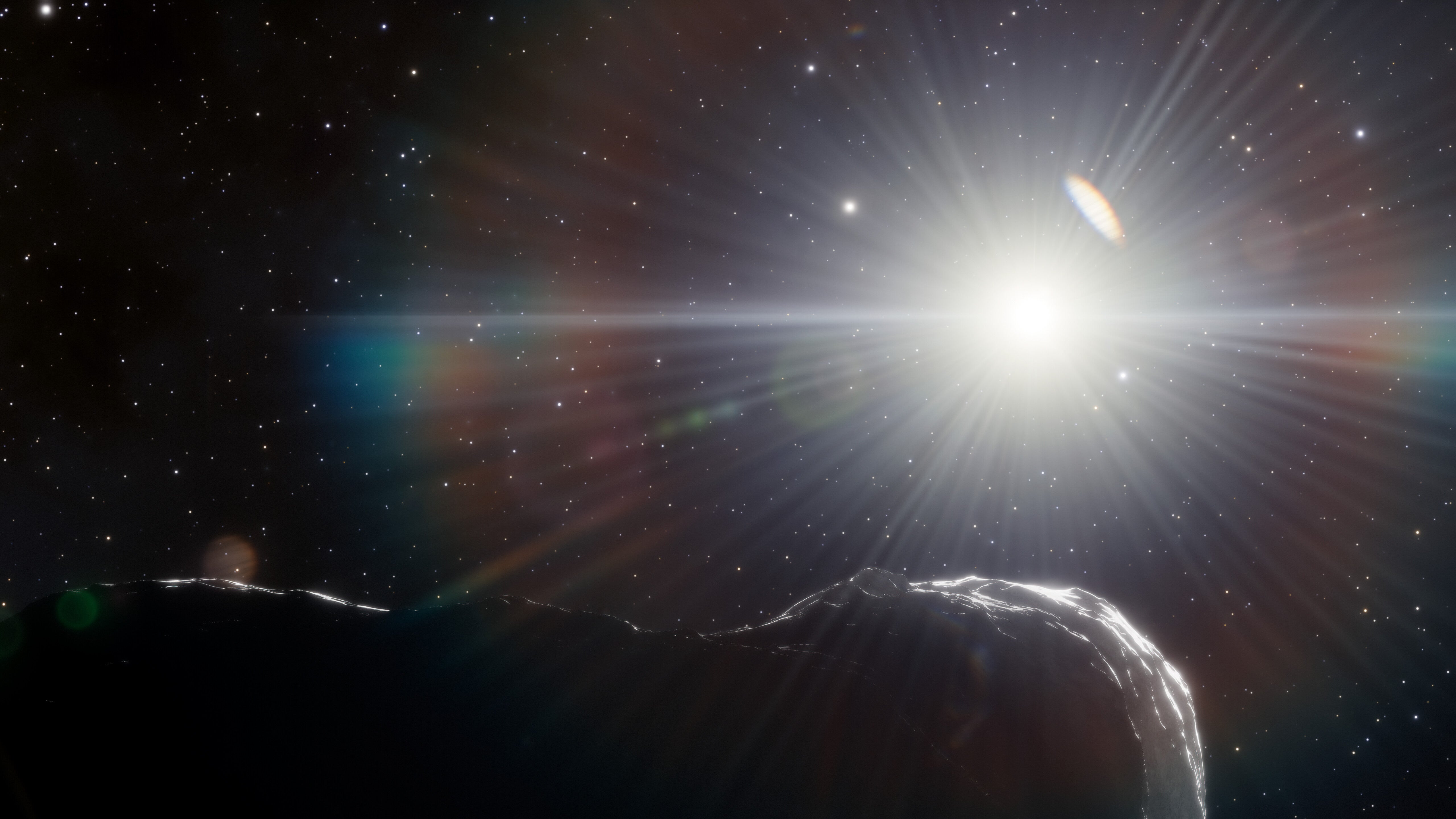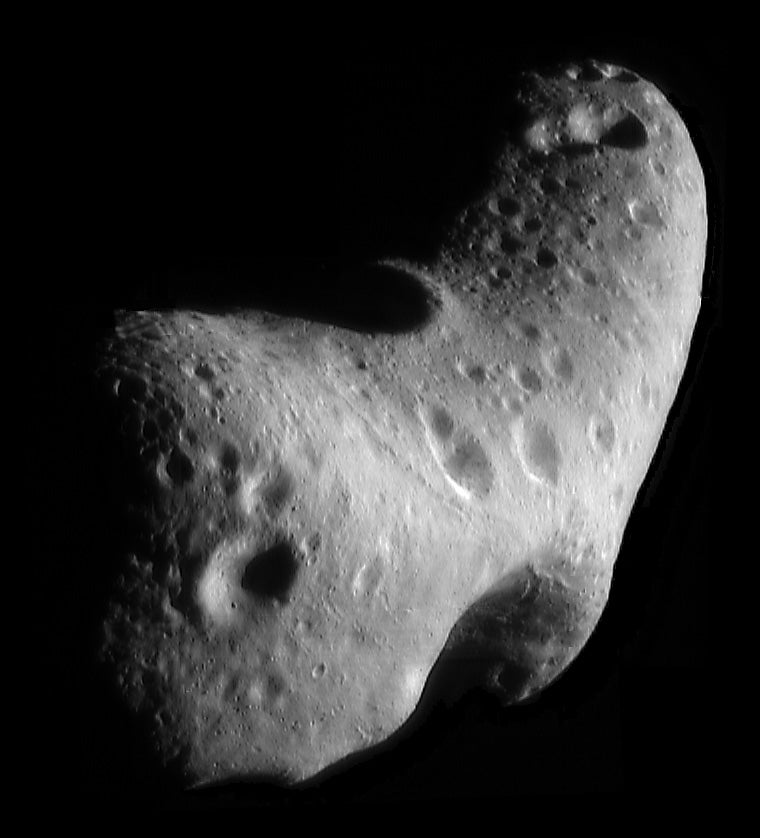
The vastness of space is often romanticized in sci-fi tales, with depictions of interstellar journeys and distant galaxies. However, closer to home, we find a more sobering narrative. Our planet’s history is punctuated by violent encounters with rogue space rocks, and every so often, the cosmos makes sure to remind us of the fragility of our world.
In the past decade alone, Earth has had several close encounters with asteroids. The Chelyabinsk meteor event in 2013 is a haunting reminder of these cosmic threats. An asteroid, approximately 65 feet (20 meters) in diameter, entered Earth’s atmosphere and exploded over Russia, causing more than 1,500 injuries as well as widespread property damage.
Another significant near-miss was 2019 OK, a city-block-sized asteroid that zipped within 45,000 miles (72,000 kilometers) of Earth in 2019 — a cosmic hair’s breadth in the grand scheme of things. Traveling at some 55,000 mph (88,500 km/h), if the asteroid had struck our planet, it could have really wreaked havoc.
Another uncomfortably close encounter was the Tunguska Impact of 1908, which highlights the potential devastation even a relatively small asteroid can cause. In this event, an explosion over Siberia flattened an estimated 800 square miles (2,000 square kilometers) of forest, equivalent to about 80 million trees, yet left no crater. The explosion is believed to have been caused by the airburst of a meteoroid or comet fragment to be about 100 to 200 feet (30 to 60 meters) in size.
These events are all just some of the recent reminders of the unpredictable nature of space objects, but they all underscore the necessity for constant vigilance and preparedness.
How often do asteroids narrowly miss Earth?

The question on everyone’s mind is: How often do asteroids miss Earth? Well, the answer can be both comforting and unsettling. Every day, Earth is bombarded by about 100 tons of material from space. But most of that comes in the form of dust-sized particles. These smaller fragments pose no threat and can sometimes result in beautiful meteors.
However, larger asteroids, those greater than about 460 feet (140 m) in diameter, are of genuine concern. NASA’s Center for Near-Earth Object Studies (CNEOS) states that these larger bodies could cause “regional damage,” which is why Congress has mandated NASA to find more than 90 percent of all near-Earth objects (NEOs) greater than this size.
Fortunately, according to NASA, asteroids larger than about 330 feet (100 m) in diameter are only expected to strike Earth roughly once every 10,000 years. Meanwhile, nearly apocalyptic asteroids, those larger than about 0.6 miles (1 km) wide, are expected to strike our planet once every several hundred thousand years or so.
What is the difference between asteroids, meteoroids, and meteorites?
Often, terms like asteroids, meteoroids, meteors, and meteorites are used interchangeably in popular culture, but each has its own unique definition and characteristics. Here’s a brief guide to distinguish them:
Asteroids: These are rocky remnants from the early formation of our solar system about 4.6 billion years ago. Most asteroids are found between the orbits of Mars and Jupiter in what’s known as the asteroid belt. They can range in size from just a few feet to hundreds of miles in diameter.
Meteoroids: Smaller than asteroids, these are chunks of space debris, typically composed of rock, metal, or a combination of both. They can be as small as a grain of dust. When meteoroids enter the Earth’s atmosphere at high speeds and burn up, they can create meteors.
Meteors: Often referred to as “shooting stars,” meteors are the bright streaks of light produced when a meteoroid burns up in Earth’s atmosphere. As a meteoroid races through our atmosphere at breakneck speeds, it heats up due to air resistance, causing gases around it to glow.
Meteorites: If a meteoroid (or asteroid) survives its fiery passage through Earth’s atmosphere and lands on the ground, it is then called a meteorite. These can vary in size from tiny micrometeorite particles to massive chunks several feet in diameter. Meteorites are often sought after by scientists and collectors because they provide invaluable insights into the early solar system and the building blocks of planets.
How much damage can asteroids cause?
The damage an asteroid can cause is directly related to its size, composition, and speed. And as you might imagine, the bigger and faster an asteroid, the greater the threat.
- Small asteroids: Less than 80 feet (25 m)
These usually burn up upon entering the atmosphere, occasionally resulting in meteors, or, at worst, small meteorites. - Medium-sized asteroids: 80 feet (25 m) to 360 feet (140 m)
An asteroid in this category can cause significant local damage. The Chelyabinsk event falls into this category. - Large asteroids: 360 feet (140 m) to 0.6 miles (1 km): These could cause regional destruction, with such a collision causing devastating consequences, from fires to tsunamis to potential climate changes. Fortunately, these events are rare, estimated to occur every 10,000 years or so.
- Massive asteroids: Greater than 0.6 miles (1 km)
These are the most terrifying. A collision with an asteroid of this size would be globally catastrophic, potentially causing mass extinctions. For instance, the asteroid impact that is believed to have helped cause the demise of the dinosaurs was roughly 6 miles (10 km) in diameter. Thankfully, these strikes are exceedingly rare, with a significant impact estimated to occur only once every million years or so.

Defending Earth from asteroids
Understanding potential threats from space has given rise to various programs and missions specifically designed to detect and potentially deflect these asteroid threats. Initiatives like NASA’s Planetary Defense Coordination Office and the European Space Agency’s Space Situational Awareness program focus on early detection, which is the first line of defense when it comes to asteroids.
Given the consequences of a potential impact, it’s crucial that humanity invest in technologies and strategies to mitigate asteroid threats. Ideas to do this range from the ‘gravity tractor’ method, where a spacecraft uses its own small amount of gravity to gently tug an asteroid off course, to kinetic impactors like NASA’s recent DART mission, which collide with the asteroid to alter its trajectory.
While near misses with large asteroids are relatively rare, when they do occur, they are a vivid reminder that our planet exists in a cosmic shooting gallery. So, as we continue to learn more about asteroids and develop better means to protect our planet from them, it’s essential to remember that space may be beautiful, but we need to prepare for the threats it holds.









